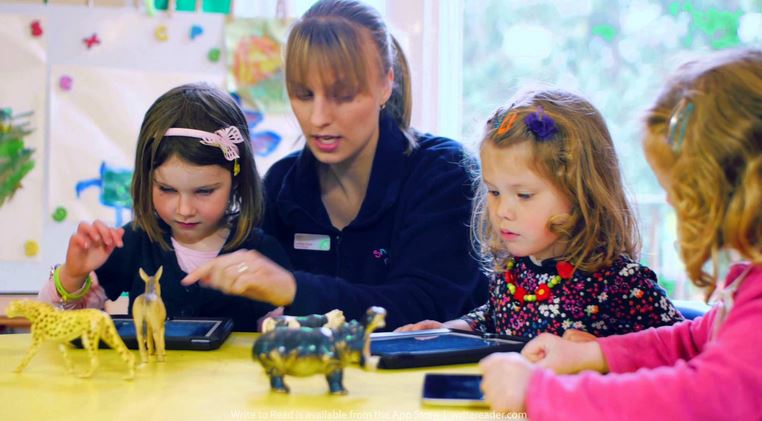Adaptive and interactive learning takes more than hardware to succeed

Across the Nordic region, schools are looking to use ed-tech solutions to create a more individualized educational experience for students through adaptive and interactive learning, and help teachers better manage their classrooms. While ed-tech companies rush to fill this need, it is worth remembering that it takes more than hardware to make adaptive and interactive learning a success.
Ed-tech has been riding a wave of hype, and for good reason. Ed-tech tools can help improve learning for both children and teachers, by finding ways to make learning more accessible and independent. Often, ed-tech solutions help bring interactive and adaptive learning into classrooms. Interactive learning uses technology to help students be more engaged and help them retain more information, while adaptive learning tools allow teachers to better customize learning to a student’s individual needs.
Ed-tech is also used to address the growing skills gap in digital competences, by helping students become more adept at using technology, and for classroom administration.
“As the skills gap widens in terms of digital competences, ed-tech has come into focus as being the solution to many educational frictions,” says Blair Stevenson, the founding lab manager of EduLAB Oulu, an ed-tech pre-incubator program.
Many schools are also integrating ed-tech at an administrative level, to help teachers better run their classrooms.
As ed-tech gets further intertwined with pedagogy, it is critical discuss how decisions made at a hardware level effect learning.
Focus on learning, not technology
“People are now realizing that it is just as important to develop and focus on training, pre-service, and in-service [teachers colleges] than it is to focus on actual technology,” explains Blair Stevenson.
Hege Tollerud, CEO of the Oslo Ed-tech Cluster, shares this view.
“A challenge with ed-tech is to use it correctly. A lot of people think everything can be solved with devices. There needs to be attention to choosing the right pedagogy tools, and not just playing games. If a teacher is not using a tool correctly it can go wrong,” she says.
When schools look to invest money into technology, decisions are often made at a hardware level by, for example, choosing to invest in hundreds of tablets for students. These decisions are often made without having a nuanced recognition of how the hardware fits into the classroom pedagogically. Simply bringing a tablet into the classroom will do little to improve a students learning experience.
“There is a need for understanding that any use of tech has to be responsive to the fact that it’s actually supporting effective learning,” explains Hege Tollerud.
Nima Marefat, the cofounder of Digiexam, the most widely-used solution for digital examinations in Sweden, is one of the senior founders in the ed-tech industry, having founded Digiexam in 2011 – long before the current hype. He thinks schools need to take a holistic view of using technology in education. He explains:
“In my perspective, something digital is, like any tool, something that is sometimes very useful, and sometimes not. We learn different things in different ways, and some learning may be better to do in a not digital way. I have seen a trend where basically every school thinks they are digital because they are investing in digital tools, but sometimes this just means giving ipads out to students or purchasing a learning management system. The strategy should be looking at the whole picture.”
Tools to help teachers and administration, not students, are just as important
Many experts in the field believe that the one of the best ways ed-tech can positively change the educational sector is through tools that help teachers – not students.
“Time for teachers is limited – when they have good systems for administration, teaching, and planning, it frees up more time to spend with the students,” says Hege Tollerud.
While straightforward learning tools such as Duolingo are more known to the general public, many companies are tackling the changing nature of the educational system itself.
“You can go into any jurisdiction and find 12 different concepts of how learning should be done,” says Blair Stevenson. This is a huge change from only 10 years ago, when almost all classrooms in the Nordics followed similar learning models.
Traditionally, pedagogy falls under a “teacher-centric” model of teaching, where the teacher is the ultimate controller of how learning is done in the classroom.
“Now, there are certain products that can support a completely different model of how education works institutionally,” says Blair Stevenson.
Adaptive and interactive learning tools allow teachers to create a completely different classroom experience, in which students gain knowledge through creating, rather than passive learning. Furthermore, adaptive learning tools help teachers engage with students on a more individualized level than ever before, to better assist students who need more attention.
However, change is slow, and the plethora of tools available can be stultifying.
Sophisticated buyers make better choices
“The teaching model is traditional,” says Nima Marefat. “We need to give it some time to evolve.”
One way he recommends to do that is to implement and test ed-tech tools early and often.
“If they [schools] don’t test solutions now, when there is an ed-tech explosion in 2 years, it will be too late. They will not understand how to evaluate a good solution,” he says.
Schools have historically never suffered from the same market pressures as other industries, and have not been forced to renew themselves. This means that when new trends in education pop up, it is a challenge for schools to understand them, as they have no structured or strategic way of innovating.
As with any new technology, buyers must reach a level of sophistication to understand the criteria of a good solution. One way to alleviate this is creating transparency around the ed-tech industry, through a mapping of the ed-tech ecosystem and the building of an industry cluster.
EdTech Sweden, along with Silicon Vikings, is currently aiming to complete the first ever industry mapping of the ed-tech ecosystem.
Eilif Trondsen of Silicon Vikings explains:
“My vision is to develop a set of consistent definitions about what ed-tech is and have a segmentation scheme to map these definitions across the Nordics. What is the company trying to do? What products and services do they have? It is important to develop a static picture to start with. Over time, we can understand the dynamics of the industry and how it is evolving.”
Read more about Ed-Tech Sweden here and participate in the mapping here.






Many good things are already happening in the schools, and more to come the next couple of years. For example, a new national strategy for ICT in swedish schools that are highlighting the need for 1.Improvement of teachers digital compentence 2.Equal access to digital tools 3.Improvement of teaching administration. Great opportunities for the edtech industry.